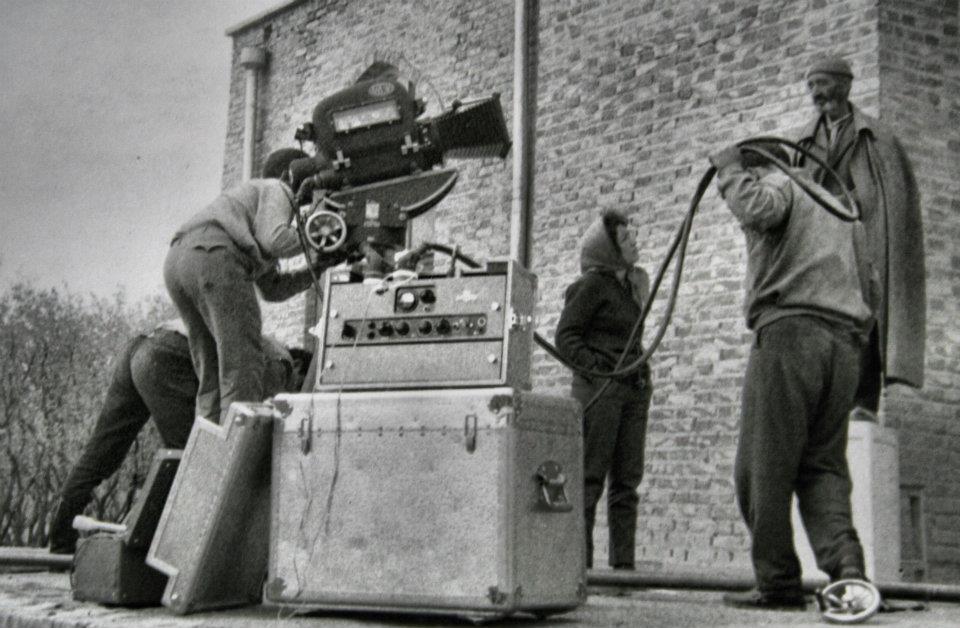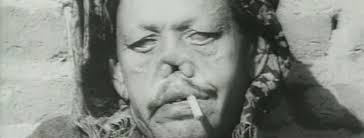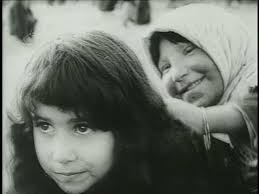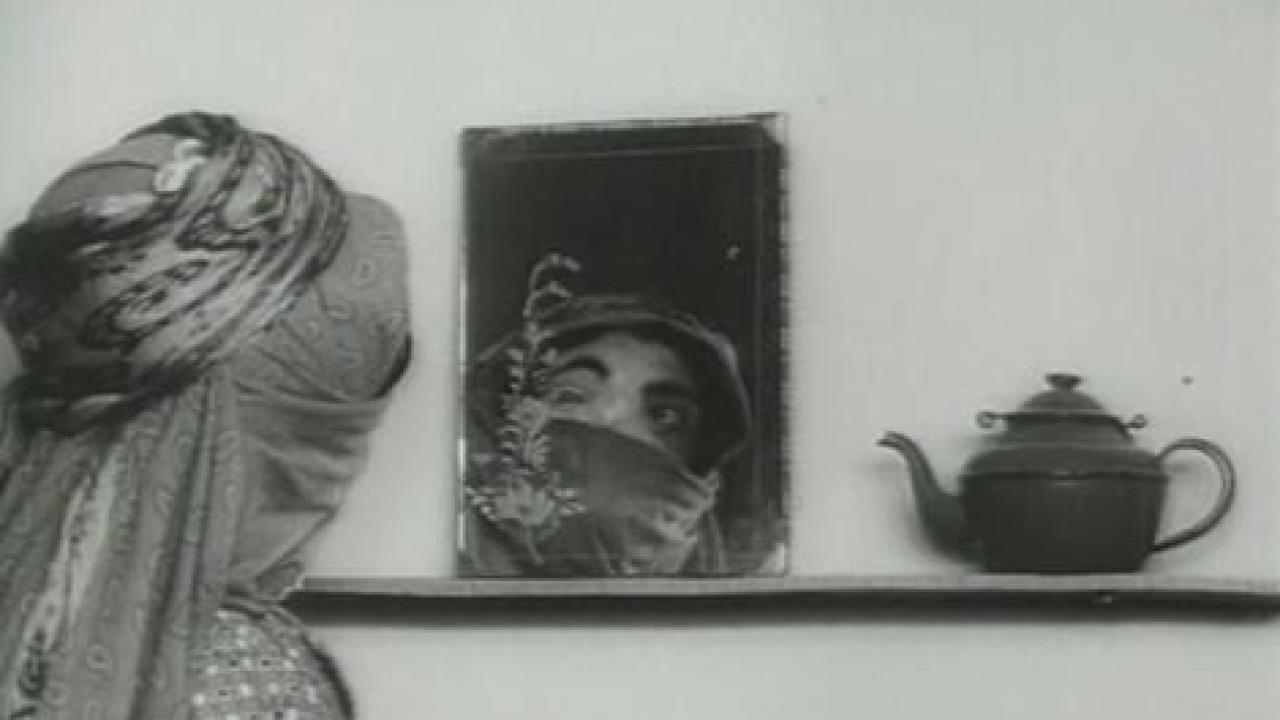Plenty of films, indeed much of modern art and poetry, has sought beauty in apparent hideousness. At least since Baudelaire fondly remembered a romantic stroll among the graceful swarm of putrid maggots inside “that superb cadaver / blossom[ing] like a flower,” it’s been a constant theme. But few have merged the mytho-poetic and the decaying flesh with as much compassion as Forough Farrokhzad did in 1962’s The House Is Black.
In just 22 minutes, and in her only film, the Iranian poet dove deeper into suffering, empathy, and transcendence than many horror filmmakers (or film-essayists, for that matter) have since.

Already controversial for verses articulating female desire in a cultural context less than eager to hear about such things, The House Is Black exists on an entirely different plane. Combining a recitation of extraordinary beauty over elegantly framed, jaggedly edited images — horrific, banal, joyous by turn — the film both bears witness and exalts, in a sort of Persian riff on the Old Testament. It’s aware of the body and aware of the horror, and opts for the body. There’s nothing like it.
Filmed, unflinchingly but with unmistakable specificity, entirely in a hospice in East Azerbaijan Province, a leper colony that may as well exist in another dimension, The House Is Black is a marvel of visual storytelling: no dialog, no linked incident, and just Farrokhzad’s narration. We are presented with a catalog of suffering: a blind man traces the contours of a wall, a man with no face smokes a cigarette in an unexpected fashion, lesions (shudder) are scraped from the bottoms of feet.

The filmic resonances echo and rebound: Freaks, probably first and foremost, but also Chris Marker’s aesthetic, Cronenbergian fixations on deteriorating flesh, Bunuel’s incursions into fictive documentary. But from its opening title card, in which Farrokhzad makes clear she intends The House Is Black to be a defense and an instruction, there are examples closer to home: say, Kiarostami’s early work with Institute for the Intellectual Development of Children and Young Adults in Tehran, or the earliest works of pedagogical cinema from Oscar Micheaux or Lois Weber (or even, for that matter, the wildly-misconceived final section of Haxan). At least by its own account, The House Is Black aims to educate with the camera as much as it shocks.
But the striking thing about Farrokhzad’s film — one of the striking things — is the way in which it goes about accomplishing this. What could have been a tour of grotesquerie ends up affirming, in sorrow, our commonalities rather than the vicarious pleasure we sometimes find, even against our will, in the abject. Students still go to class to study The Koran, albeit with particular vantage points. (One child, asked to name beautiful things, says, “Mother, Father.” Asked to name ugly things, he replies, “Hand. Foot.”) They play outside, with a joy untempered by physical limitation. There’s a wedding ceremony.
Farrokhzad sugarcoats nothing. These are not ways to paper over the isolation, substitute joys. But they are solaces amid lives circumscribed by the inexplicable, and testaments to the will to persevere — if not in the face of God’s cruelty (how could God be cruel?), then despite His tests over bodies we didn’t choose. The Film Sufi considers three levels on which The House Is Black functions:
- The first level concerns the immediate and concrete conditions of the lepers in the leper colony – their circumstances of social neglect and misery.
- There is a second level or theme concerning how we understand and respond to what we encounter in the world, especially given the fact that there are always mysteries that we can’t explain. On this level the film contrasts two main approaches – the religious and the scientific – and how they deal with the scourge of leprosy.
- At a still more abstract level there is the despondent idea of leprosy seen as a general metaphor for the human condition. Under this guise, we are all seen as lost and lowered to the lepers’ level of misery.
None of these are separable, but, as non-lepers, it is presumably the final one that lasts in the mind. As the door closes in the final frames, we too are left in the dark, in the house, behind fences, alone or with others, and always with our own deformities (which hopefully don’t require quite so many literal scalpels … though let’s not be too certain about that). Though, just as hopefully, there will be a friend inside to comb our hair, as an act of both love and resistance.

The House Is Black is a tough watch, because it is a tough film. The cinematography can only be called beautiful, and not just in Baudelaire’s sense. We feel we’ve witnessed something honest, which is rare enough, but also something searching, questioning, and in pain, even amid the occasional kindness and the rare laugh. It looks a lot like life.
An excerpt from Farrokhzad’s poem is worth repeating in full:
“I will sing your name, O Lord.
I will sing your name with the 10-string lute.
For I have been made in a strange and frightening shape.
My bones were not hidden from you when I was being created.
I was molded in the bowels of the earth.
In your book all my parts have been written . . .
. . And your eyes, O Lord, have seen my fetus.
I won’t see the spring.
These lines are all that will remain.
As the heavens circles, I fell into the bedlam.
I’m gone.
My heart is filled with sorrow.
O Muslims, I am sad tonight.
I said if I had wings of a dove,
I would fly away and be at rest.
I would go far away and take refuge in the desert.
I would hasten my escape from the windy storm and tempest.
For I have seen misery and wickedness on earth.
The universe is pregnant with inertia .
. . and has given birth to time.
Where would I escape from your face?
And where would I go from your presence?
If I hang on to the wings of the morning breeze
And reside in the deep of the sea,
Your hand will still weigh on me.
You have made me drunk with indecision.
How awesome are your deeds!
I speak of the bitterness of my soul.
I speak of the bitterness of my soul.
When I was silent, my life was rotting
. . . from my silent screams all day long.
Remember that my life is wind.
I have become the pelican of the desert,
. . the owl of the ruins,
And like a sparrow, I am sitting alone on the roof..
I am poured out like water
. . . as those who have long been dead.
On my eyelids is the shadow of death.
Leave me.
Leave me, for my days are but a breath.
Leave me before I set out for the land of no return,
. . . the land of infinite darkness.
Alas, for the day is fading,
the evening shadows are stretching.
Our being, like a cage full of birds,
Is filled with moons of captivity.
And none among us knows how long he will last.
The harvest season passed,
The summer season came to an end,
. . . and we did not find deliverance.
Like doves, we cry for justice.
. . and there is none.
We wait for light and darkness reigns.
O overrunning river driven by the force of love,
. . . flow to us, flow to us.
Despite its title, The House Is Black is not the darkness; it’s the river, captured, briefly, on film.

